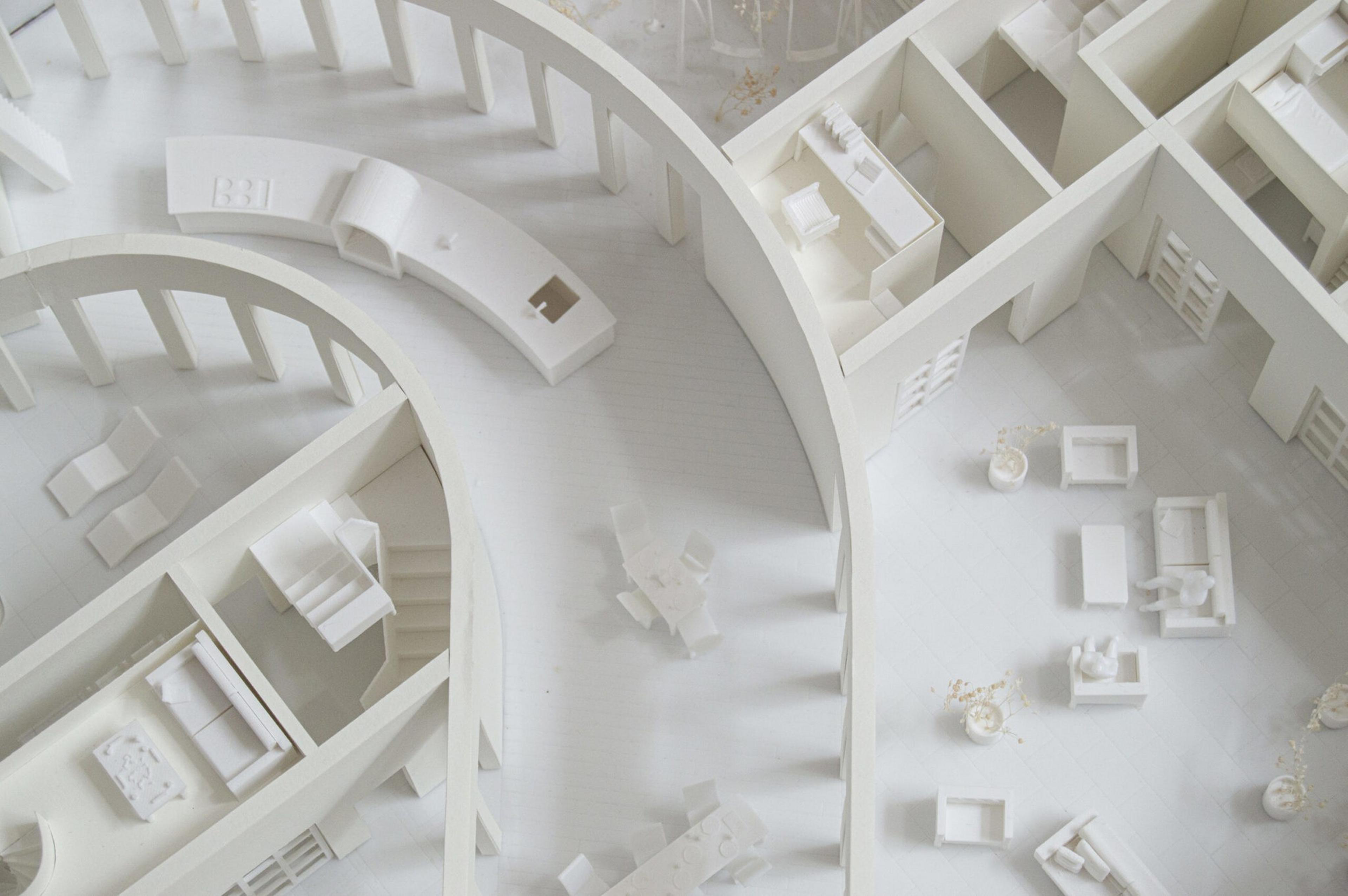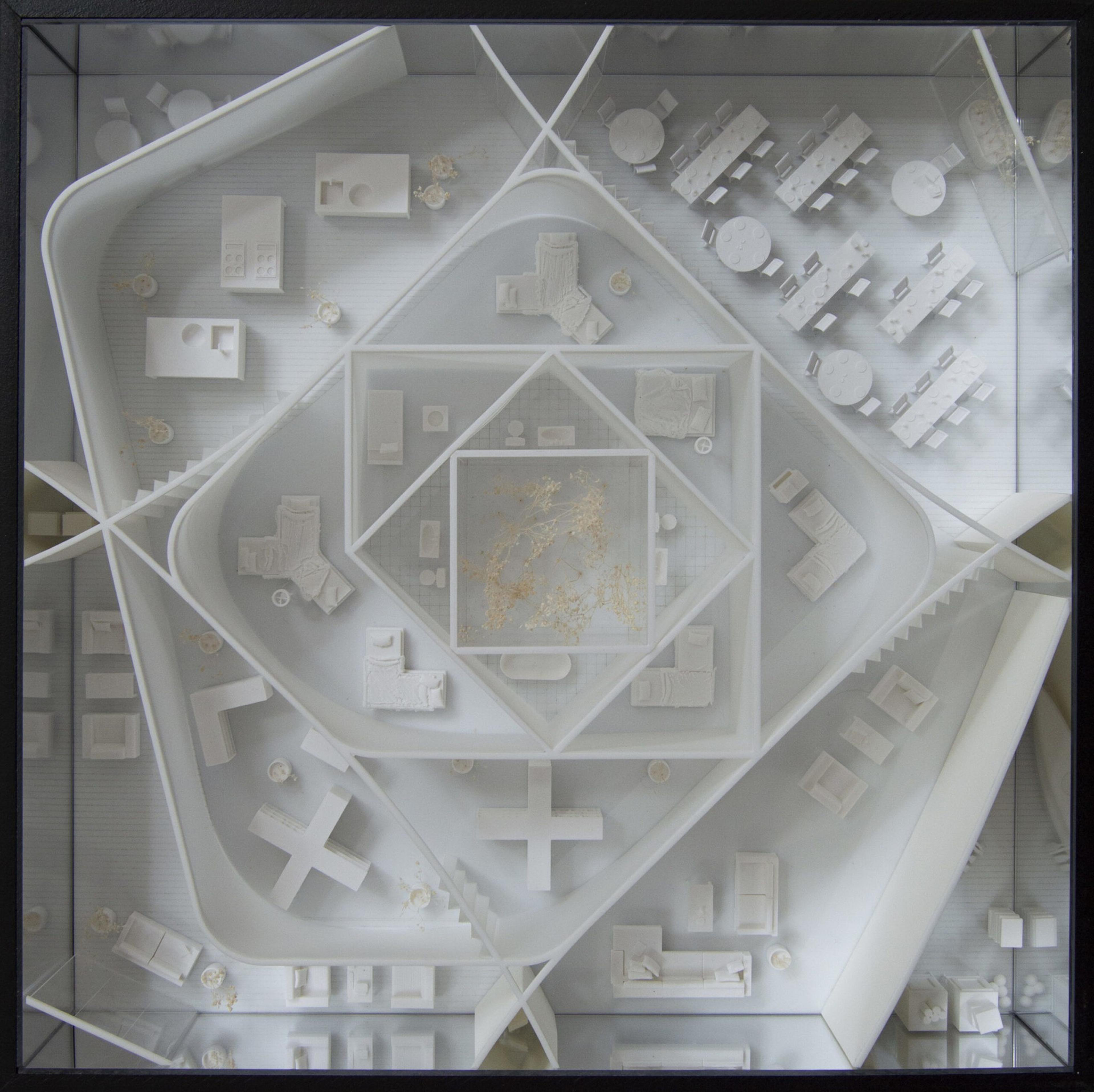A hot tub in the bathroom. Hammocks in the living room. A private basketball court and movie theater.
Such amenities may sound like something you’d only see on an episode of MTV Cribs, but they’re actually an integral part of the imagined collective living spaces on display in a new exhibit of five speculative designs now showing at the David Ireland House.
Based on case studies of over 35 collective living communities—including several from the Bay Area’s past and present—the exhibit called House of Commons (opens in new tab) was dreamt up by local architecture firm The Open Workshop (opens in new tab) and two professors from the California College of the Arts.

While the show and its models are small, the ideas behind them are big, especially when viewed with San Francisco’s housing crisis in mind.
When California College of the Arts Associate Professor and Open Workshop founder Neeraj Bhatia first moved to San Francisco in 2013, he, like many of the city’s new urbanites, felt overwhelmed by the high prices and fierce rat race for rental housing.
“You feel like you’re in this competition for a very, very small shoebox of an apartment,” he recalled of the experience.
In response, Bhatia began looking at alternatives, which led him to stumbling upon an intentional living community in Lower Haight known as the Embassy (opens in new tab). He was “blown away” by the way he saw its members negotiate the domestic challenges and governance of shared living spaces and eventually developed an exhibition for the 2021 Venice Architecture Biennale (opens in new tab), along with fellow CCA Associate Professor Antje Steinmuller. The pair based their project on their contemporary observations and what they learned from the Embassy and other communities like it. They also researched the 1960s and ’70s heyday of communal living in the Bay Area (opens in new tab)—with a little help from their friends.

Frances Reid, 78-year-old retired documentary filmmaker and former architecture student of Bhatia and Steinmuller’s was once a close associate of Berkeley’s all-female Essex St. Collective, which blossomed in the 1970s as a hub for feminist meetings in the East Bay.
Reid, who was a regular visitor to the collective back in the day and friend to the group, introduced the pair to the “politically radical feminist women” who pooled their money and resources to live in the Essex St. Collective.
“There was a whole lot of commitment to collectivity in all aspects,” Reid remembered, “both economically and also in terms of decision making. … I think that it all came out of the social justice movements and civil rights movements and anti-war movements … a desire to do things differently and to be more equitable, be more democratic, not do things in a top-down way.”
Reid even owned the home for a time—buying it after the group dissolved.
While some of the communities that Bhatia and Steinmuller studied, like Essex St. Collective, are no longer around or have left very little trace, their spirit still persist in many of the contemporary collective living situations the pair studied.

Organized through a series of transforming enclosures, a 'surface' model organizes a fluid relationship between the public and private realms. | Photo courtesy of The Open Workshop
“I think there’s often a sentiment that these things were in the ’60s and they all went extinct or they were utopian or dystopian, depending on what literature you read,” said Bhatia. “There’s always the stigma that these were all failed communities. In fact, several persisted and … have modernized along the way.”
Bhatia observes several differences between the intentional communities of yesteryear and today’s collective living arrangements. Whereas the communes of the past tended to be insular, countercultural “escapes”or “enclaves” in direct opposition to mainstream society with more freewheeling social mores, he sees modern day intentional communities being much more outward-looking and self-aware about “questions of governance, communication and labor distribution.”

He’s also seen a rise in co-living spaces created by developers. Often geared toward young tech professionals, they tend to outsource domestic labor like cleaning and grocery shopping “to alleviate the tensions of everyday living” but often at the cost of fostering deep community bonds, he observes.
Bhatia sees these living arrangements as symptomatic of greater, more systemic housing issues where “housing has become real estate” and a “commodity” to be bought, sold and speculated upon rather than actively lived in.
“That game is being played by a very small swatch of society,” said Bhatia, noting that while developers aren’t inherently bad, “there will inevitably be cases where the goal of making money is at odds with supporting community.”
He’s also observed a shared sense of “precarity” between tenants in shared living situations rather than a common sense of shared values or ideals.
“I think the reason that people come together isn’t necessarily because of a shared set of politics or lifestyle, but maybe coming together because of a shared precarity,” said Bhatia. “Many of them are being driven by say more necessity in terms of cheap rent or things like more flexible lease [types].”

Which is why Bhatia and his team purposefully imagined collectives designed for a precarious class of workers (opens in new tab) living paycheck-to-paycheck. These would-be communal living designs would not only feature luxurious amenities but would also be optimized for sharing. You could call it the revenge of the precariat (opens in new tab) or at least a thumbing of the nose to big housing.
“You know, you can live luxuriously for a low cost if you’re willing to share. That’s kind of a tradeoff,” said Bhatia, giving the following example:
“I shouldn’t be giving up my personal bathroom just to have a similarly sized, dysfunctional bathroom that is now shared by 20 people. If I’m going to trade off my private bathroom, I now want a bathroom with a hot tub.”
And such seemingly extra architectural imaginings, or “luxuries without economic burden” as Bhatia says, are not without real-world consequence. The Board of Supervisors recently approved a change to the city’s definition of “group housing” using recommendations and analysis from a white paper that Bhatia and Steinmuller produced as part of their research.

In the end, Bhatia hopes that such legislative changes can produce “more humane and ethical living standards for how people live together.”
He says that he does not view his group’s research into intentional communities as a “silver bullet,” but he thinks it can offer at least one imaginative window into solving San Francisco’s housing crisis.
“There’s going to have to be a range of strategies from accessory dwelling units that might tap into a particular price point and demographic to collective living to maybe even micro-units,” he said. “One thing that we’re hoping for is that precarity can transform to forms of solidarity, that people find power by living and working together on things.”
